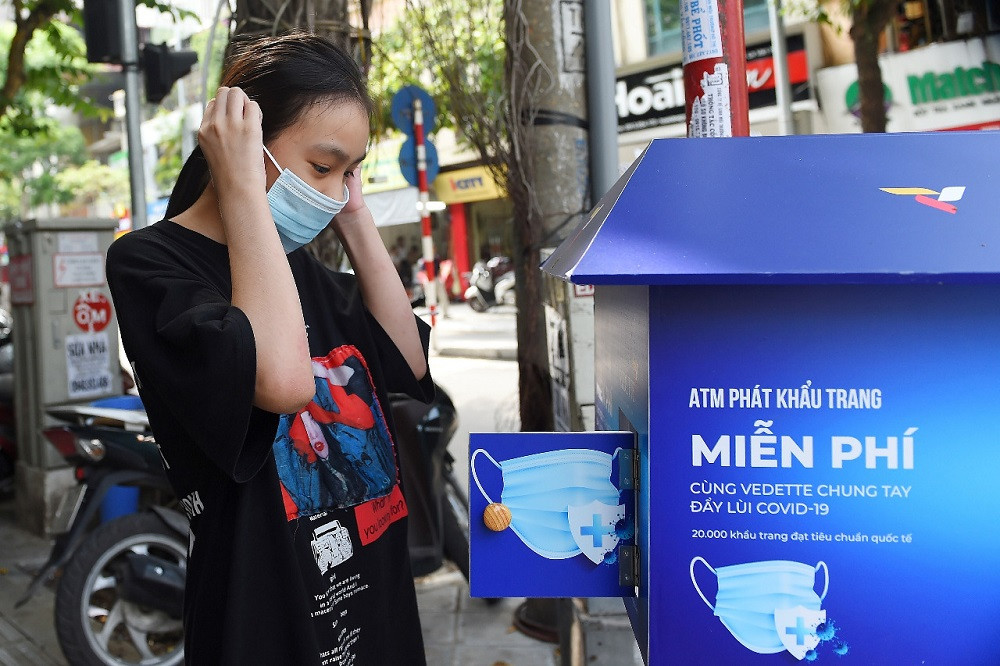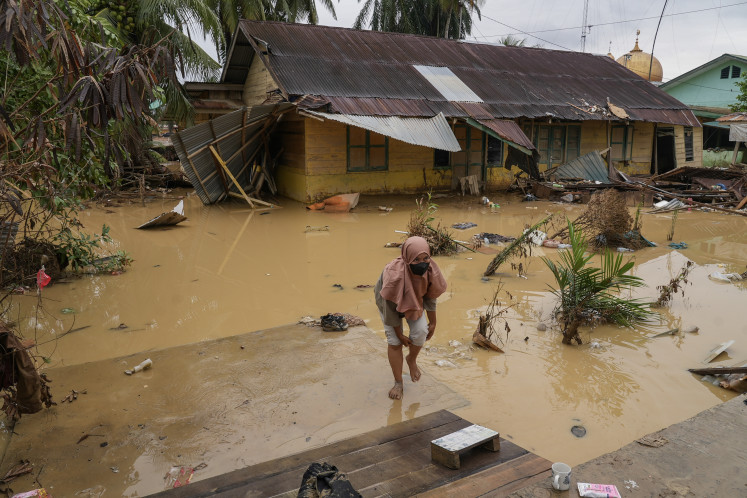Popular Reads
Top Results
Can't find what you're looking for?
View all search resultsPopular Reads
Top Results
Can't find what you're looking for?
View all search resultsImproving ASEAN COVID-19 response: Implementation key
COVID-19 has hit the ASEAN economy in at least three ways.
Change text size
Gift Premium Articles
to Anyone
C
OVID-19 has brought about the worst economic impacts in the modern era, hitting the world economy from the demand side and supply side simultaneously.
As of Oct. 5, COVID-19 has infected more than 700,800 people in Southeast Asia. It has claimed more than 17,100 lives, with Indonesia recording the region’s highest mortality rate at 4.1 percent.
At the same time, COVID-19 has caused more than 30 million people in ASEAN to become unemployed, pushing about 18 million people into poverty, of which 3 million are in extreme poverty. What worries us most is that, if we fail to make corrections, rising unemployment and poverty may persist for a long time.
In five years’ time, it will be very difficult to help people who are currently unemployed return to their previous employment, as their skills will be obsolete and they will be crowded out by fresh graduates. This will create structural unemployment, and structural unemployment will lower the gross domestic product (GDP) in the long run.
COVID-19 has hit the ASEAN economy in at least three ways. First, lower global demand decreases ASEAN’s exports. Second, dry global capital markets reduce foreign direct investment into ASEAN. Third, sluggish tourism hits the services sector and many small and medium enterprises (SMEs). As of now, most ASEAN countries are experiencing a recession with two consecutive quarters of negative economic growth — the first and second quarters of this year. In the best scenario, ASEAN will contract by 2.7 percent this year, and even if ASEAN can increase domestic consumption in the third and fourth quarters, it can only grow by 3-4 percent next year.
The good thing about the ASEAN economy is that ASEAN has recorded average economic growth of 5.2 percent in the last two decades. This growth is supported by low budget deficits and reasonable public debt.
In the last 10 years, ASEAN countries recorded an average government budget balance of minus 2.7 percent of GDP (budget balance is government revenue minus expenditure, a negative number means expenditure is higher than revenue). This is relatively low compared to the average of developing countries with minus 7 percent.
Most ASEAN countries also have relatively reasonable public debt of between 22 to 53 percent of their GDP. Only Singapore has more than 100 percent of its GDP in public debt at 154 percent this year. But Singapore has manged its public debt very well, investing in infrastructure, industry and education. On average, ASEAN had public debt of 43 percent of GDP over the past 10 years.
This low budget deficit and reasonable public debt gives ASEAN governments enough space to provide stimulus.
By September, ASEAN countries had allocated a total fiscal stimulus of US$207 billion (or about 6.5 percent of their GDP). This is much higher than the average of developing countries at 3 percent. The fiscal stimulus goes to health care, social safety nets, tax incentives and economic recovery programs.
The fiscal stimulus is accompanied by monetary stimulus that includes reducing interest rates, lowering reserve requirements for banks, increasing the maximum duration of repo auctions, easing liquidity and buying back government bonds.
Many experts contend that Eastern countries, including ASEAN, have been managing COVID-19 relatively well compared to their Western peers in terms of managing cases and mitigating the economic fallout.
But despite ASEAN’s relatively good intervention, there is room for improvement, especially in terms of implementation.
At the national level, there is a need to improve the implementation of stimulus measures. First, health and economy are not a trade-off. We should prioritize health with all efforts. Society can run businesses and return to normal daily activities if and only if they are safe and healthy. When we prioritize health, then the economic recovery will be automatic.
Second, ensure COVID-19 social safety nets work effectively and efficiently, but only temporarily. It is crucial to target the right beneficiaries. Third, allocate tax incentives to productive activities (agriculture, industry and services) not consumption of goods. Fourth, increase disbursement rates of fiscal and monetary stimulus and ensure the programs are ‘purely social and not political’’.
Last, we need a clear postCOVID-19 strategy that places health and education at the top of the development agenda, as well as a trade and investment strategy to help business recover quickly.
ASEAN has had a large number of good commitments, but this is the time for not only commitments but real, solid ASEAN cooperation. At the regional level, health must be our top priority. ASEAN may cooperate with China, Japan, Korea and Germany to ensure the availability of health supplies at affordable prices for all levels of society. Second, we need to ensure the availability and price stability of food, particularly staple foods. Third, streamline exportimport and investment procedures and put automatic licencing systems in place at zero cost. Last, improve capacity in digital-basedactivities (assisting ASEAN countries in need) to ensure development in education, industry and public services.
COVID-19 is a wake-up call for all of us to understand the real meaning of development. Other than GDP and economic growth, it is crucial to pay attention to human development (the percentage of the literate population, the percentage of graduates and the percentage of engineers), health (protein consumption every day, life expectancy and the number of doctors per thousand new-born babies) and institutions (the percentage of population living in poverty, the percentage of population having access to electricity and schools and the crime rate).
The success of a country is not merely determined by its GDP level or economic growth. It is determined by the success in improving the quality of life of its people — for a safe, healthy and educated society.
***
Legal adviser (Southeast Asia region) at Economic Research Institute for ASEAN and East Asia (ERIA). The views expressed are her own.










